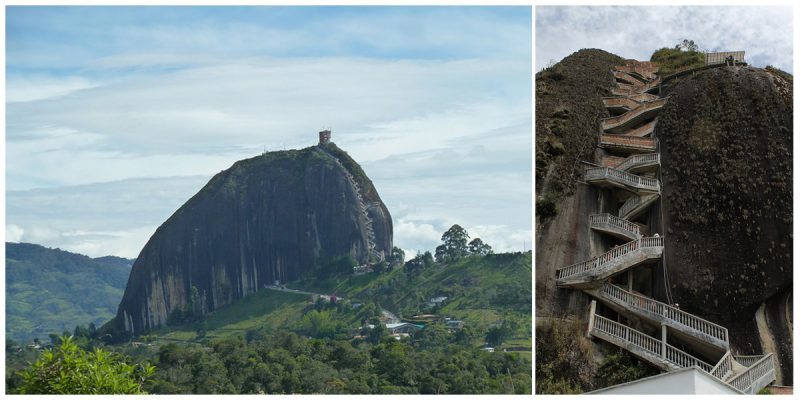La Piedra Del Peñol, also known as El Peñol Stone, is a gigantic monolithic formation rising over 650 feet from the flat ground of Guatape, Colombia and it is the town’s main attraction.
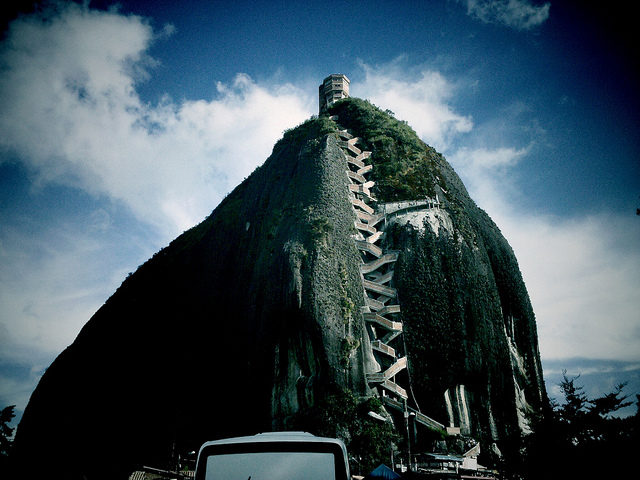
According to geologists, the rock base called “batlolito antioqueño”, and the “Peñón” were formed millions of years ago. Locals say that the Indian tribe called Tahamis lived here many years ago. They worshiped the rock and called it “mojarrá” or “mujará” in their language, which can be translated as rock or stone.
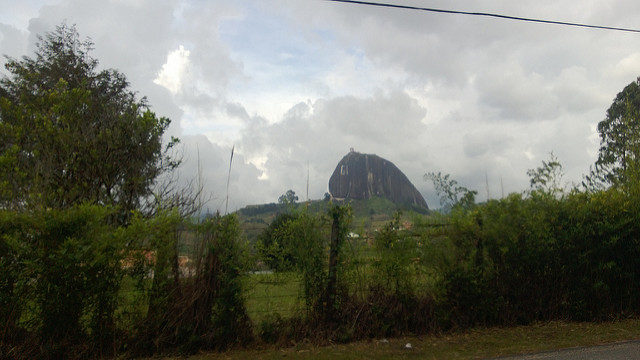
Here they were engaged in fishing and believed in the existence of the divine fish Batolito. The tribe brought her sacrifices, and she thanked them with a good catch. The gods became angry because the tribe didn’t honor them but worshiped the fish. Batolito jumped out of the sea to protect its people. There was a fight and the Gods retreated. But the fish fell in suffering and turned into a rock, the El Peñón rock, which stands to this day.
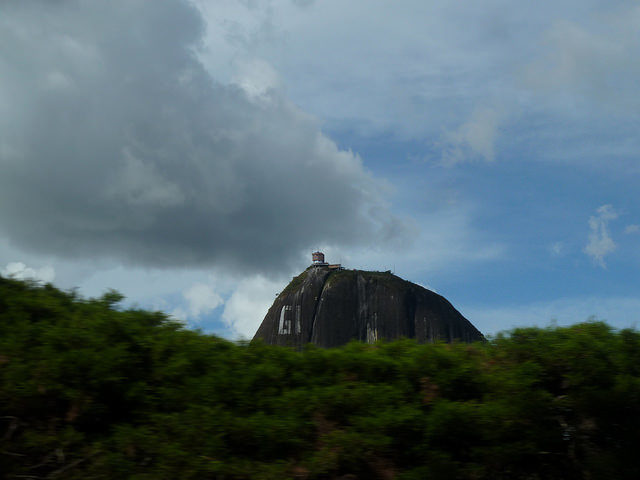
On the northern side of the stone, there are large white letters “GU”. The residents of Guatapé decided to settle the matter by painting the name of the town on the rock with huge white letters, but only the “G’ and a part of the “U’ were completed because a large angry mob was assembled to stop it.
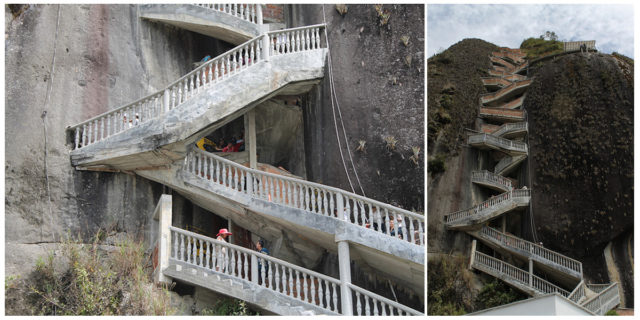
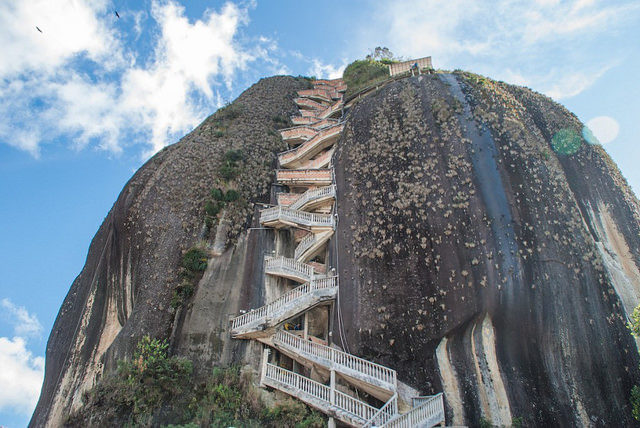
It has some rock breaks, and the longest one was used by the climbers in the past to get to the top. A 649-step masonry staircase was later wedged in the crack, and in recent years the stairs have been improved from wooden to stone with separate smaller stairs for those descending. The rock has become a popular attraction, with guests forking out a small fee to zig-zag to the top and look out over the beautiful islands in the surrounding lakes.
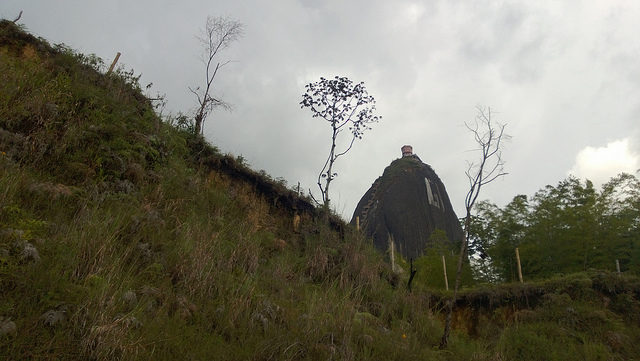
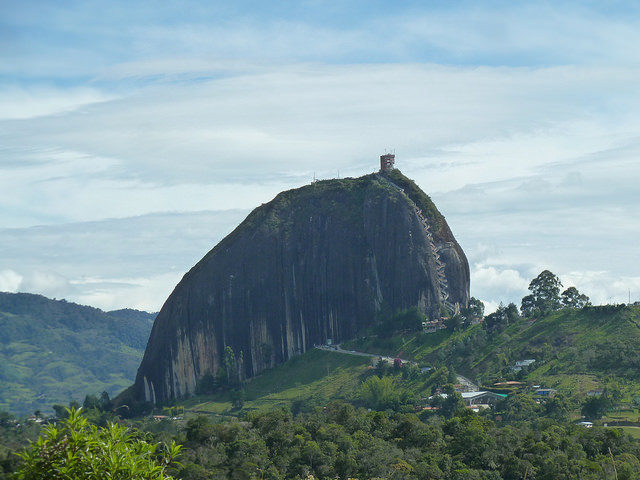
A viewing spot was built on the top of the rock, a small hut for buying souvenirs like handcrafts, postcards, and other local goods along with a few food outlets.
